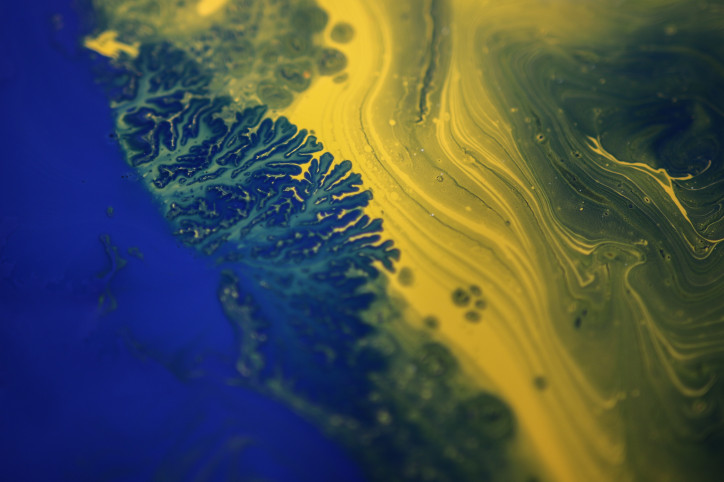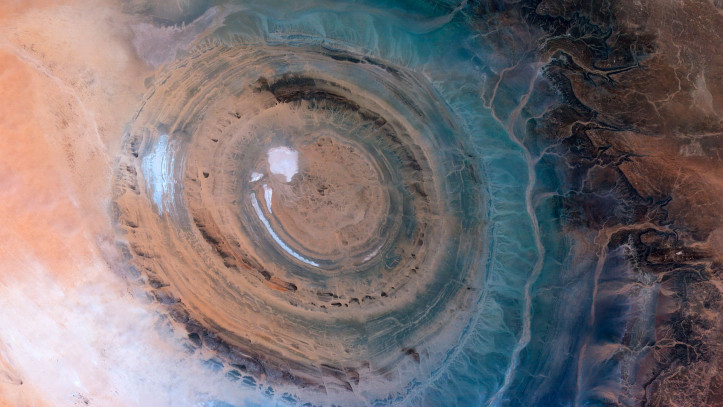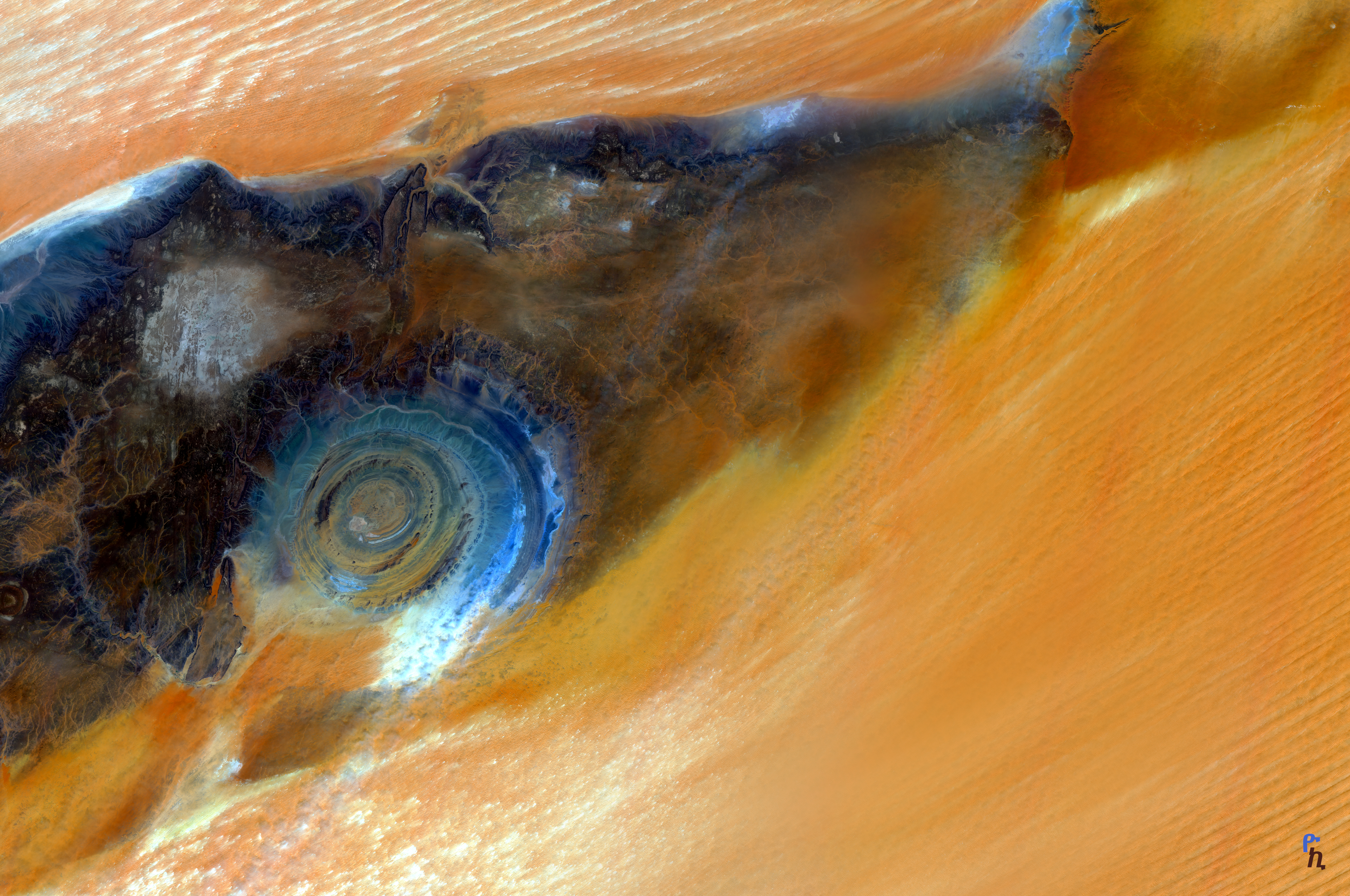
Nature tends towards entropy. At the same time, it is full of patterns and regularities. How is this possible?
One of my favourite literary characters, the moderately heroic wizard Rincewind from Terry Pratchett’s novels, was once terrified to hear that a certain area featured many erratic rocks. The wizard’s anxiety could be understood if we take the word ‘erratic’ to mean unpredictable or even capricious, and not just as a descriptor of a rock that has been transported by a glacier and deposited in a surprising location.
As is usually the case with Pratchett, however, Rincewind’s worries illustrate a deeper issue. We generally feel safer in an orderly, predictable world. Our attempts to comprehend the universe make us so keen to find in it some universal patterns and rules that we often get led astray. Furthermore, if we do manage to find some patterns or similarities, we insist on giving them a deeper meaning, even though so many phenomena around us are either random, or appear the way they do because there isn’t much of an alternative. The veins in our hands, the venation of leaves and courses of rivers are all supposed to illustrate our deep connection to nature. That connection does exist, of course, but is there any other way for them to flow? If many small trickles combine to form a larger one, this is what it looks like; there’s no alternative, and the only thing it illustrates is the behaviour of liquids in vessels.

Ancient pyramids, encountered all over the world, are another good example. They were, of course, built by someone. But looking at the eerily similar structures in Mexico, Egypt or Indonesia, some people reach the conclusion that they must be the work of extra-terrestrials. Meanwhile, it is enough to ask the question: how else could we stack a large number of cuboids on top of each other, so that they don’t all collapse? The pyramid is simply the most effective method. After all, we have no problem with the fact that pyramids of merchandise in shop windows require no alien assistance.
But sometimes stones will arrange themselves into regular patterns without the contribution of an organizing entity. All it takes is for them to be located in my favourite freezing ends of the world. This is where we can encounter so-called patterned ground, characterized by stone or sand patterns visible on the surface, made up of regular circles, stripes or other shapes. I know a few places in the Arctic where it looks really impressive. Wherever you look, the tundra consists of very regular cushions: soil fragments that fit together tightly, like the cells of a honeycomb, only each of these cushions has a diameter of more than a metre. They are divided by straight furrows filled with gravel. When you first see it, it’s hard not to associate it with neatly delineated flower beds. But who would potter about with a spade and a tape measure in the remote Arctic plains to do that?
It is easy to guess that nobody does. We call these regular patterns polygons; the areas decorated with them are called polygonal patterned ground. They are caused by thousands of years of repeating annual cycles in which the top layer of permafrost freezes and defrosts. When the temperature falls below zero, the freezing soil swells a little due to the so-called needle ice that appears within the deposits. This causes the phenomenon of frost heave. When a soil cushion swells like this, larger pebbles slide off it more easily and frequently than smaller ones. In the span of many years, a separation occurs and the cushions become divided by straight borders full of gravel. If there are many cushions, they take on the shape of increasingly regular polygons, because they share a straight demarcation line with every neighbour – like two bubbles in a bubble bath.
Incidentally, the soggy depths of geomorphological terminology are a true treasure trove of linguistic gems. If, for example, such a swollen cushion was located on a slope and was made of peat, it would be called a hummock. Larger cushions are called lithalsas, and these are divided into string bogs (aapa), palsas and pingos. A palsa, in turn, can also be called a bugor. In closing this digression for Scrabble fans, I should also mention that processes which cause mechanical deformations of the Earth’s crust are called diastrophism, and the slow creep of the top layer of soil – which shapes slopes in periglacial conditions, i.e. around glaciers – is known as solifluction.

The work of giants
On the seashores of both polar regions one can also encounter other patterns – on a much larger scale. Radstock Bay cuts deeply into the world’s largest uninhabited (by people) island: Devon Island – or, in the Inuktitut language, Tatiurutit – in the Canadian Arctic. The bay is surrounded by a vast plain marked by semi-circular, parallel lines. There are more than 20 of them, each about a kilometre long, with identical gaps of about dozen metres between them. It looks a bit as if the land momentarily behaved like water, into which someone dropped a huge boulder – and then immediately came to its senses and became solid again, preserving the regular semicircles of spreading waves. The uppermost line is about 700 metres away from the shore, and a little above it are the remains of houses of the Thule people – the ancestors of modern Inuit, who lived in the area less than a thousand years ago. But the regular lines on the plain aren’t their handiwork. The houses – built of stone, whale bones and hides – used to stand right at the shore, so that hunters could easily and quickly react to the appearance of any marine mammals. But the land – freed from the weight of the glacier that used to cover it – rises slowly, like an incredibly sluggish piece of wood that we tried to push underwater with a finger. These vertical movements of the Earth’s crust, caused by changes in load, are called glacial isostasy. The coastal plain rises, the sea reveals more and more of the land (which is why there are so many fossilized remains of seabed dwellers from millions of years ago), while the shoreline moves further away from the human shelters. The parallel, semi-circular lines demarcate the so-called raised beaches, or subsequent locations of the previous border between sea and land.
The lines in Radstock Bay are the most spectacular example of this phenomenon that I know. But raised beaches can also be found in the Antarctic, for example right outside the Henryk Arctowski Polish Antarctic Station. Their surprising regularity is met with a range of reactions. Many years ago, during her visit at the station, a tourist couldn’t stop admiring our beach, full of neatly-arranged pebbles. I was showing everyone around and standing next to her as she summoned up her courage and asked one of the most memorable questions in my life. She was keen to know where all these stones came from and who arranged them this way, because “when I was landscaping my garden in Texas, sourcing stones like this required a large truck and was very expensive.” Well, I’m not proud of it, but that was before I started working as a tourist guide, so, rather off the cuff, I replied that the Polish Academy of Sciences is an incredibly wealthy institution and seven ships ferried these stones in from our country when the station was being built. She was impressed. I guess now I probably wouldn’t give her that malarkey.
Geological regularities can be enormous. Near the town of Ouadane in Mauritania there is a unique feature called the Eye of the Sahara. Its regularity can be best appreciated in satellite images, because this set of concentric rings of various colours is about 50 kilometres in diameter. Tabloid thrill seekers consider it to be a remnant of the lost Atlantis. The rather more mundane scientists initially thought the place was a crater left behind by an enormous meteorite, then a trace of a volcano that wasn’t, and now they lean towards the theory that it is the eroded peak of a geological dome. So first, for some reason, a gigantic, multi-layered bubble appeared on the surface, and then – because of erosion – it was levelled, as if someone cut off the top of the bubble with a knife.

Near the other end of the size spectrum we can find basalt columns, or – more generally – columnar joints. These columns, with their regular, polygonal section, are shaped by the contraction of cooling igneous rock. The gradually cooling lava shrinks and cracks, creating parallel, tightly-packed stone beams with a diameter of a few dozen centimetres. The regular sections are a result of opposing forces at work. If a column like this had cooled down alone, it would have been round, because each point of its shrinking surface would have been at the same distance from the hot core. But the same thing happens in neighbouring columns, and circles cannot adhere to each other closely, so straight edges form at the joints and the column takes on the shape of a regular polygon. The slower the cooling process, the more regular the pattern. The most famous columns are made of basalt, usually quite uniform and close-grained. The well-known Giant’s Causeway in Ireland is formed of the tops of such pillars. Their regularity was so astonishing to the ancient locals that they created many legends to explain it. I’ve never been to Ireland, but basalt columns can be found all over the world, also in my favourite areas.
In the Arctic archipelago called Franz Josef Land there is the spectacular Rubini Rock – a small island with tall, sheer walls built of precisely such columns. These create horizontal shelves and spread out into attractive fan shapes, where thousands of pairs of guillemots and kittiwakes nest. Although the Rubini Rock is mentioned in nearly every geology handbook worth its salt, my favourite example is a tiny island with the working name ‘Pencil Rock’, located near one of the field bases forming part of the Henryk Arctowski Station. I suspect that fewer than 50 people have seen it, but I’m sure that if it had been in a more accessible area, its twisted but incredibly regular shapes would have made it a world-class attraction.
Stars, waves and fractals
We encounter self-organizing inanimate nature all the time. The fine sand on the bottom of the lake – in the shallows, where there’s no vegetation – arranges itself into regular, tiny dunes. Carried by the water, the grains come to a halt on top of other grains, creating minuscule, oblong ridges. They are, however, limited in size: at a certain height the grains can no longer stay on one sand roll and they topple down, slowly creating another one. Large dunes are created in the same way, only the grains of sand are moved by the wind, not water.

Some of the most attractive manifestations of random order are definitely the processes of growth of crystals and fractals, which can be found both in animate (one could, at a stretch, include broccoli and cauliflowers in that category) and inanimate nature – for example, when snowflake stars or ice paintings on windowpanes come into being. By the way, fractals are another source of linguistic inspiration. They can be described as self-similar objects with nontrivial structures at every scale. Or, in human terms, a fractal is a structure composed of fragments that look identical to each other. So the pattern seen with the naked eye will also appear when we look at a fragment of it under a magnifying glass – and then under a microscope, when we peer at an even smaller bit. As for the ice crystals that make up a snowflake, that regularity goes all the way to the molecular level. Freezing water particles, composed of one oxygen atom and two hydrogen atoms, connect so that each attaches itself to four others, creating between them regular, hexagonal surfaces, which are then duplicated in the structures of higher order. This is why snowflakes are hexagonal.
This fascinating structure was first documented by Wilson Bentley, a farmer from Vermont, who attached a microscope to a camera in 1885. He was the one to prove definitively that snowflakes really are all different, but each has a very regular, hexagonal symmetry. Why are they not identical? Because every flake – as it forms in the air – has a different micro-history from its neighbours. They might fall next to each other, but there are always some differences regarding the angle of the fall, sun exposure, humidity, or the size of the dust mote around which these tiny ice crystals form. This is why they always end up shaped a little differently. Interestingly, these initial dust motes are of fundamental importance. I still remember my surprise when, 20 years ago in the Antarctic, I tried to explain to a Brazilian colleague what I mean when I talk about beautiful starry snowflakes. She knew snow, but only from the ends of the Earth, while I had had experiences in Poland. We went outside, I reached out my gloved hands and was astonished to see that they were getting covered by a kind of snow dust, with no shapely stars. The air in the Antarctic was simply too clean for these small wonders to form.

However, regardless of the patterns and regularities spontaneously appearing in nature, the universe’s dominant tendency is towards an increase in entropy – in other words, increasing disorder. That’s a very good thing. Thanks to this – in the spirit of humility and modesty – every time it occurs to us to tidy something up, we can sit ourselves down and calmly wait for the thought to pass. Who are we to defy the universe? But I’m in a rebellious mood today. So, in a minute, I’ll get up and do the dishes, and maybe even arrange the books on the floor into slightly tidier stacks. That way, I will heroically stand up to the might of the universe and stand shoulder to shoulder with snowflakes. I wish the same to you – only not too often.








